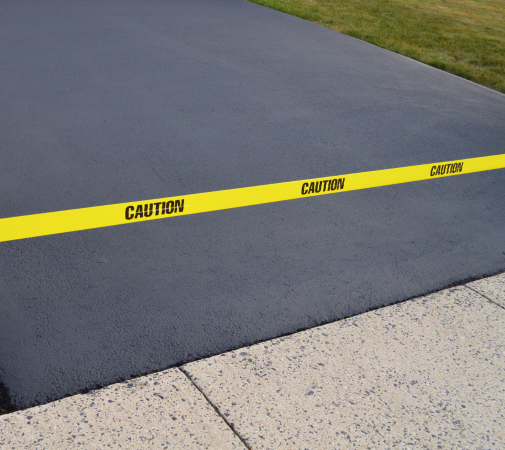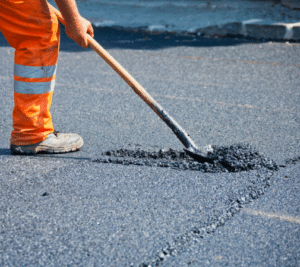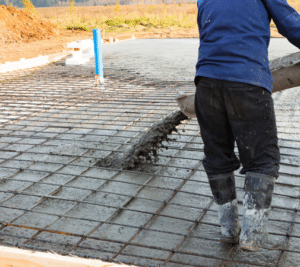Introduction
When it comes to maintaining and preserving pavement, there are numerous techniques available. Among the most popular options are micro surfacing and slurry seal. These treatments provide a cost-effective way to extend the life of pavement and enhance its functionality.
Choosing the right pavement treatment is crucial as it can significantly impact the long-term performance and durability of the surface. Both micro surfacing and slurry seal offer distinct benefits and have different applications, making it necessary for project managers and stakeholders to have a clear understanding of their characteristics.
Micro surfacing is a polymer-modified, cold-mix paving system that consists of a mixture of asphalt emulsion, crushed aggregate, mineral filler, and water. It is typically used to restore and preserve deteriorating asphalt surfaces, filling minor cracks and providing a smooth, skid-resistant finish. Micro surfacing can effectively extend the service life of pavements, enhancing their resistance to weathering, rutting, and oxidation.
On the other hand, slurry seal is a mixture of asphalt emulsion, aggregate, water, and additives. It is also used as a preventive maintenance treatment to seal the existing pavement surface, preventing further deterioration and enhancing skid resistance. Slurry seal is commonly applied on low-traffic roads, parking lots, and residential streets to improve their appearance and protect the underlying pavement from aging and deterioration.
Understanding the benefits and applications of micro surfacing and slurry seal is paramount in making informed decisions about pavement treatments. The following sections will delve into a detailed comparison of these techniques, enabling readers to select the most suitable option for their specific project requirements.

What is Slurry Seal?
Slurry seal is a type of pavement maintenance treatment that is used to protect and extend the life of existing asphalt surfaces. It is composed of a mixture of aggregate, asphalt emulsion, and fillers. The aggregate consists of finely crushed rock, while the asphalt emulsion is a combination of asphalt binder and water. Fillers, such as Portland cement, are added to improve the strength and durability of the slurry seal.
The application process for slurry seal involves several steps. First, the pavement surface is thoroughly cleaned to remove any debris or loose material. Then, a thin layer of slurry seal mixture is spread evenly across the surface using a specially designed machine. This layer is typically between ¼ to ⅜ inches thick. After the slurry seal is applied, it needs to cure and set for a specific period of time before the pavement can be reopened to traffic.
Slurry seal offers several benefits for pavement maintenance. It provides a protective barrier against the damaging effects of weather, traffic, and oxidation. It also helps to seal small cracks and imperfections in the pavement, preventing water from penetrating the surface and causing further damage. Slurry seal is typically used on low-traffic roads and parking lots, as well as residential streets and neighborhoods. It is an cost-effective option for preserving and maintaining asphalt surfaces, prolonging their lifespan and reducing the need for more extensive repairs or resurfacing in the future.
What is Micro Surfacing?
Micro surfacing is a versatile pavement maintenance treatment that is designed to protect and enhance the surface of asphalt roads. It is similar to slurry seal but contains additional polymers, making it more durable and long-lasting.
The composition of micro surfacing typically consists of a mixture of aggregate, asphalt emulsion, water, mineral fillers, and special additives such as polymers. These additives provide improved resistance to wear and weathering, resulting in a longer lifespan for the treated pavement.
One of the key differences between micro surfacing and slurry seal is the application process. Micro surfacing is typically applied using a specialized machine that spreads the mixture evenly across the pavement surface. It requires multiple passes to achieve the desired thickness, which can range from 6 to 12 millimeters.
Curing times for micro surfacing are relatively quick, usually taking around one to two hours. This allows for minimal disruption to traffic flow, making it a convenient option for busy roads that cannot be closed for an extended period.
Micro surfacing offers numerous advantages in maintaining and enhancing pavement surfaces. It provides a protective layer that seals existing cracks and prevents the infiltration of water and other damaging substances. It also restores the smoothness and skid resistance of the road, improving driving comfort and safety.
Common applications of micro surfacing include residential streets, parking lots, airport runways, and highways. It is particularly effective for roadways that experience moderate traffic loads and require surface preservation and protection.
Overall, micro surfacing is a cost-effective and efficient pavement maintenance treatment that offers numerous benefits for enhancing and extending the lifespan of asphalt roads. Its unique composition and application process make it a suitable choice for a wide range of projects.
Comparative Analysis: Micro Surfacing vs. Slurry Seal
- Application and Setting Time
Micro surfacing and slurry seal are both cost-effective pavement maintenance treatments that can extend the life of roadways and improve their skid resistance. While they have similar benefits, understanding their differences in application processes and setting times is crucial in determining the best treatment for a specific project.
Micro surfacing is typically applied using a specialized machine that mixes a polymer-modified asphalt emulsion, mineral aggregate, water, and additives. The mixture is then evenly spread on the pavement surface, creating a thin layer that seals cracks and provides a smooth driving surface. The application process for micro surfacing is relatively quick, allowing for larger road segments to be covered within a short period. In terms of setting time, micro surfacing typically requires a few hours to cure, allowing traffic to be diverted back onto the treated surface relatively quickly.
On the other hand, slurry seal is a mixture of asphalt emulsion, fine aggregate, mineral filler, and water. It is applied using a slurry machine, which distributes the mixture evenly over the existing pavement. Compared to micro surfacing, the application process for slurry seal is typically faster, making it more suitable for smaller road segments or areas with limited traffic management options. However, slurry seal has a longer setting time, usually requiring 6-8 hours to cure before traffic can be reintroduced.
Considerations for project timelines and traffic disruption are important when choosing between micro surfacing and slurry seal. If a project has a tight schedule or limited interruption allowances, micro surfacing may be the preferred option due to its quicker setting time. Conversely, if traffic management options are available and project timelines are more flexible, slurry seal can be a suitable choice, especially for smaller-scale projects. Understanding these application and setting time differences helps project managers make informed decisions for selecting the most appropriate treatment for their specific project requirements.
- Durability and Lifespan
Durability and lifespan are important factors to consider when choosing between micro surfacing and slurry seal for pavement maintenance and rehabilitation projects. Both treatments offer different advantages in terms of their performance and longevity.
Micro surfacing is known for its high durability and long lifespan. It is a mixture of polymer-modified asphalt emulsion, aggregate, mineral fillers, and water. This composition provides a strong bond and resistance to wear, rutting, and cracking. The polymer modification enhances the resistance to aging and improves the durability of the surface. Micro surfacing is suitable for various traffic conditions, including heavy traffic and areas with high friction demands.
On the other hand, slurry seal is a mixture of asphalt emulsion, aggregate, water, and additives. It is less durable compared to micro surfacing but still provides a reasonable lifespan. Slurry seal is beneficial for low to medium traffic conditions and is often used as a preventive maintenance treatment to protect the pavement from oxidation and water intrusion. It can restore surface texture and provide a smooth, skid-resistant driving surface.
When evaluating durability and lifespan, the expected performance of each treatment can be influenced by factors such as traffic conditions, climate, and proper maintenance. In general, both micro surfacing and slurry seal can extend the life of the pavement, with micro surfacing offering longer-lasting results in high traffic areas and harsh climates. However, regular inspections, timely repairs, and periodic reapplications are essential for preserving the durability and longevity of both treatments.
- Cost Considerations
When considering the cost of micro surfacing and slurry seal, it is important to look at both the initial and long-term expenses associated with each method.
In terms of initial costs, micro surfacing typically requires a higher upfront investment than slurry seal. This is due to the fact that it uses a higher concentration of materials, such as aggregate, polymer-modified emulsion, and cement filler. The increased material quantity also translates to higher labor costs, as more workers are needed to mix and apply the micro surfacing.
On the other hand, slurry seal has a lower initial cost due to its simpler composition, which usually includes a mixture of aggregate, emulsion, water, and additives. The reduced material requirements and less labor-intensive application process result in lower upfront expenses.
However, when assessing the long-term costs, micro surfacing often proves to be more cost-effective. Its thicker layer provides better protection against wear and tear, extending the life of the pavement. This means that less frequent maintenance and resurfacing are required, resulting in long-term savings. Slurry seal, although cheaper initially, may need to be reapplied more frequently and may require additional patching and repairs over time, increasing its long-term expenses.
Therefore, project requirements and budget constraints should be carefully considered when choosing between micro surfacing and slurry seal, taking into account both the initial costs and the long-term cost implications.
- Surface Texture and Aesthetics
Surface texture and aesthetics play a crucial role in determining the overall quality and safety of a road or pavement. When comparing micro surfacing and slurry seal, it is essential to consider the finished surface texture provided by each method and its impact on aesthetics and safety, particularly in terms of skid resistance.
Micro surfacing is designed to create a smooth, low-noise riding surface. The mixture used in micro surfacing consists of polymer-modified asphalt emulsion, graded aggregates, mineral fillers, water, and additives. The application of micro surfacing results in a fine-textured surface with excellent rut resistance, making it ideal for roads with moderate to heavy traffic.
On the other hand, slurry seal, also known as a cape seal, produces a coarser-textured surface. It is composed of aggregates, asphalt emulsion, mineral fillers, and water. This method is commonly used for preventive maintenance purposes and to correct minor surface defects. While slurry seal provides adequate skid resistance, its coarser texture may not be as visually appealing or as smooth as micro surfacing.
In terms of aesthetics, micro surfacing generally offers a more visually appealing result due to its smoother finish. This sleek surface can enhance the overall appearance of the road or pavement, providing a clean and appealing look. However, it is crucial to note that both micro surfacing and slurry seal techniques can be customized in terms of aggregate size and color to match the desired aesthetic requirements.
When considering safety and skid resistance, micro surfacing is known for its excellent performance. The fine-textured surface generated by micro surfacing enhances tire-road interaction, resulting in improved skid resistance. This is particularly advantageous in areas with higher traffic and potential accident-prone zones. Slurry seal, although providing an acceptable level of skid resistance, may not offer the same level of performance as micro surfacing.
In conclusion, while both micro surfacing and slurry seal have their own benefits and applications, the surface texture and aesthetics they provide differ. Micro surfacing offers a smoother, visually appealing finish with superior skid resistance, making it highly suitable for roads with heavy traffic. Slurry seal, while maintaining an acceptable level of skid resistance, produces a coarser surface texture that may be more suitable for minor surface defects and preventive maintenance. Ultimately, the choice between these methods should be based on the specific project requirements and desired outcomes.

Choosing Between Micro Surfacing and Slurry Seal
When considering pavement maintenance options, it is important to evaluate various factors to determine whether micro surfacing or slurry seal is the best choice for your specific project requirements. Key considerations include pavement condition, traffic levels, budget constraints, and desired longevity of the treatment.
First, assess the condition of the pavement. Micro surfacing is typically used for pavement in fair to good condition, with minor surface distresses such as cracking and oxidation. On the other hand, slurry seal is effective for pavements in fair to poor condition, with moderate to severe distresses like rutting and raveling.
Next, consider the traffic levels on the pavement. Micro surfacing is ideal for roads with moderate to high traffic volume, as it provides a durable surface that can withstand heavy use. Slurry seal, on the other hand, is recommended for low to moderate traffic roads where skid resistance is a priority.
Budget constraints are also crucial. Micro surfacing tends to be more expensive due to its higher performance and longer lifespan. Slurry seal, on the other hand, is a cost-effective option that provides a protective layer at a lower upfront cost.
Lastly, determine the desired longevity of the treatment. Micro surfacing generally lasts longer than slurry seal, with a lifespan of 7 to 10 years compared to 3 to 5 years for slurry seal. If long-term pavement preservation is the goal, micro surfacing is the preferred choice.
To accurately assess which treatment is best suited for your project, it is highly recommended to consult with a pavement maintenance professional. They can evaluate the pavement condition, traffic levels, and budget constraints to provide expert advice on selecting the most appropriate option. Ultimately, a thorough assessment of these factors will help you make an informed decision and ensure that your pavement receives the most suitable treatment for its specific needs.
Conclusion
Micro surfacing and slurry seal are both effective pavement preservation treatments with unique characteristics and applications. While micro surfacing offers enhanced durability and skid resistance, slurry seal provides cost-effective solutions for minor surface distresses. It is crucial to understand the key differences between these treatments and choose the appropriate one based on specific project goals and conditions.
By leveraging the expertise of professionals in the field of pavement preservation, stakeholders can make well-informed decisions that will ensure the longevity and performance of their pavement infrastructure. These experts possess the technical knowledge and experience to evaluate project requirements, assess pavement conditions, and recommend the most suitable treatment option.
Selecting the right treatment can result in significant cost savings, reduced long-term maintenance needs, and improved pavement performance. Therefore, it is essential to consider factors such as existing pavement conditions, expected traffic volume and type, budget constraints, and desired level of surface protection.
In summary, the key to successful pavement preservation lies in understanding the unique advantages and applications of micro surfacing and slurry seal, and utilizing professional expertise to determine the best treatment option for each specific project.



